Glass is one of the most prevalent materials in the home. Although it is often transparent, it can come in a variety of colours and textures. Glass has many purposes, from providing natural light to serving as a protective barrier.
What are the Types of Glass used in Houses?
There are several types of glass that are commonly used in the home, and each has its own unique properties:
Clear Glass
Clear glass is one of the most commonly used types of glass in today’s world. Its clarity and optical properties make it useful for a range of purposes, from window panes to glass containers.
Because it transmits light so efficiently, clear glass can be used to provide natural illumination indoors and to enhance the appearance of certain aesthetic features outdoors.
Unlike many other types of glass, which are coloured or designed to be decorative or ornamental, clear glass has little visible colour or pattern. Rather than being used as a focal point in an interior space, clear glass is typically used as a functional material to let light pass through and provide views into a room or area.
Clear glass has a natural, very slight green hue which is more noticeable in thicker panels and when viewed on the panel edge.
Clear glass is annealed glass until it undergoes a safety process such as toughening, strengthening or laminating.
We use clear glass throughout our product range.
Our frameless shower screens for example use 10mm thick, clear glass which has been toughened.
Some of our sliding doors are manufactured using 5mm thick, clear, vinyl-backed glass.
Part of our splashback range use 6mm clear glass which has been through the toughening process and then painted.
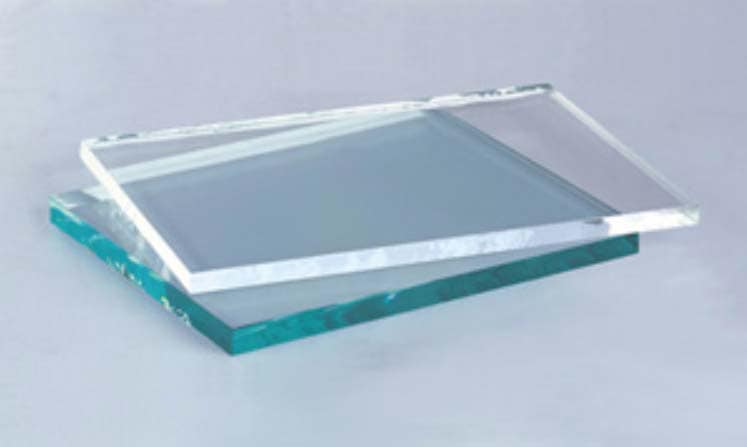
Low Iron Glass
Low iron glass is a type of glass that has been specially treated to contain lower levels of iron. This gives the glass a more transparent and clear appearance, which can be particularly desirable for applications where colour accuracy is more desirable. Low iron glass is often considered to be more aesthetically pleasing than other types of glass due to its high level of clarity.
The slight green hue of clear glass is virtually absent from low iron glass. This makes it ideal for some of our splashbacks, where colour is more critical, such as pure white.
The same is true for our Brightback sliding doors which use 5mm low iron glass, backed with white vinyl.
Annealed / Float Glass
Annealed glass, often referred to as float glass, is basically any type of glass that has not undergone any toughening process or heat treatment.
This glass is not classed as a safety glass.
A characteristic of annealed or float glass is that it fractures into large, sharp dangerous shards when broken on impact.
In some circumstances such as our wardrobe doors, float glass is backed with vinyl to avoid this characteristic and meet Australian safety standards.
The windows in most homes are made using float / standard glass.
Toughened / Tempered Glass
Toughened glass is a type of safety glass that is designed to be resistant to impact or shocks. Toughened or tempered glass is regular annealed glass that has undergone a treatment process that involves heating and rapid cooling.
This process greatly increases the strength and durability of the glass, making it ideal for applications where high levels of protection are needed.
Toughened glass can be used in a wide range of products. We use it for all of our shower screens, glass splashbacks, pool fencing and balustrade.
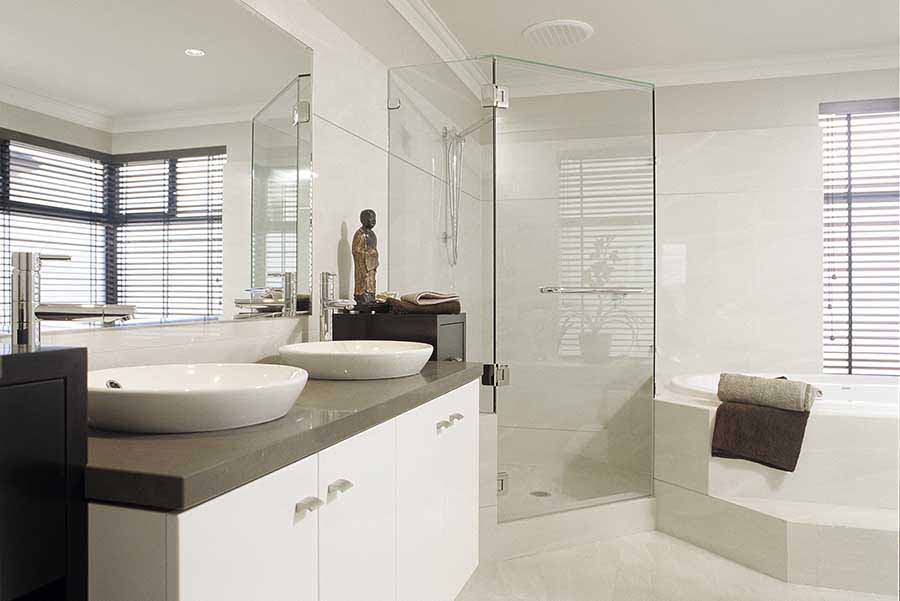
A characteristic of toughened glass is that it shatters into small fragments when broken which are far less harmful than the typical sharp shards of float glass.
Laminated Glass
Laminated glass is a type of safety glass that has been treated with a special resin inter layer to create a durable and shatter-resistant material. This unique manufacturing process sets laminated glass apart from other types of glass, such as toughened glass.
One of the main benefits of using laminated glass is that it offers improved security and durability, making it ideal for use in areas where high impact resistance or breakage prevention is crucial, such as glass balustrade, overhead glass canopies and some pool fencing.
Different types of glass can be used to create a laminated glass panel. Float glass becomes safety glass when 2 panels are laminated together. If the panel is broken, the laminate interlayer prevents the broken shards from falling away and causing harm.
Quite often, the glass panels are heat soaked or toughened prior to lamination to provide even higher standards of safety.
Tinted Glass
Tinted glass is a type of special glass that is occasionally used in the home. This type of glass is typically used on windows and balustrade, and is available in a selection of colours.
Reasons for using tinted glass in these areas is to increase privacy, reduce heat transmission or purely decorative.
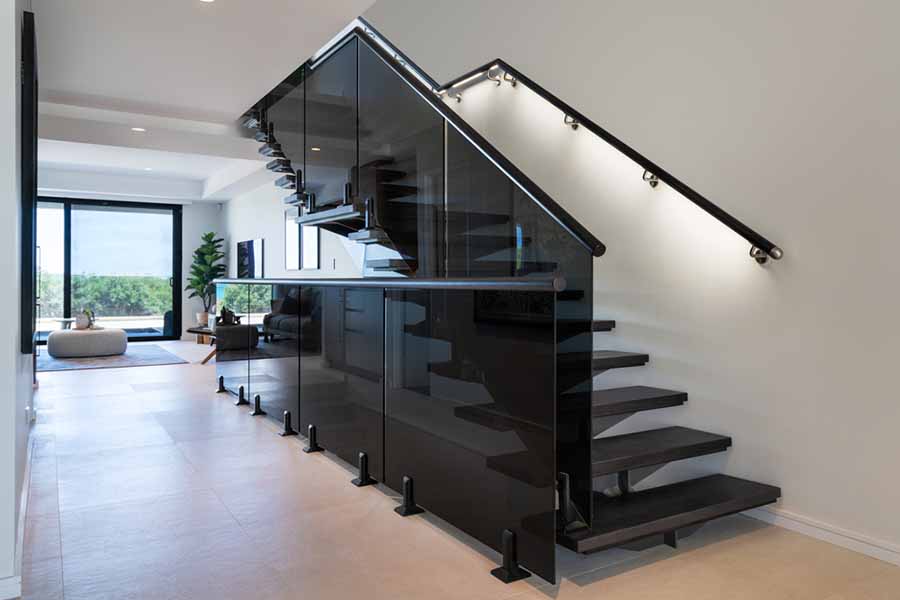
Tinted glass can of course be toughened and turned into safety glass. Overall, tinted glass is a versatile material that can be easily incorporated into many different areas of the home for both functional and aesthetic purposes.
We use tinted glass for balustrade, robe doors and even shower screens.
Coated / Mirrored Glass
There are instances around the home where a reflective glass is desirable but due to temperature fluctuations (such as near a stove top), a safety glass is required. As standard mirrors cannot be toughened, coated glass is used which offers a mirror-like finish and can also be toughened.
We use coated glass in our Elegant range of glass splashbacks. The results are stunning and are often referred to as smokey mirror splashbacks.
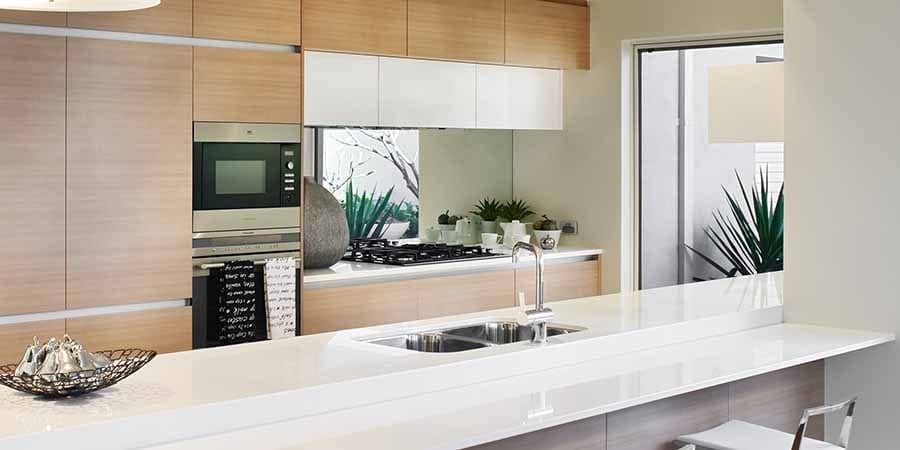
Low E Glass
Low E glass or low emissivity glass is a type of glass that is designed to be more energy efficient than traditional window glazing. This special kind of glass contains a metallic coating, which helps to reflect heat and minimize the amount of sunlight that enters the home or building.
The result is lower cooling costs in the summer and reduced heating costs in the winter, making low E glass an excellent choice for homeowners, builders, and business owners alike.
Additionally, because low E glass contributes to better insulation of a building’s interior environment, it can also improve overall comfort, helping to create a more comfortable indoor space. Whether you are looking to reduce your energy bills or improve occupant comfort, low E glass makes an excellent choice.
Decorative / Patterned Glass
Decorative glass, also known as patterned glass, is a type of glass with a pattern embossed on one side. It is commonly used in applications such as windows, partitions, shower screens, and other areas where privacy is desired but light transmittance is also important.
There are many different patterns available, ranging from simple geometric designs to more intricate florals and abstracts.
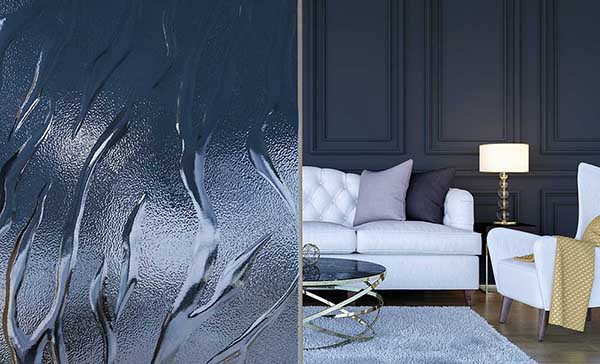
We use patterned glass in our range of decorative, frameless glass shower screens with each pattern offering its own degree of privacy.
Decorative glass can be toughened which allows us to also use it throughout our range of coloured glass splashbacks.
Obscure / Frosted Glass
Obscure or frosted glass is a type of glass that is characterized by its smooth, opaque surface. Unlike transparent glass, which allows light to pass through freely, obscure glass is designed to reduce visibility and create visual privacy within an area.
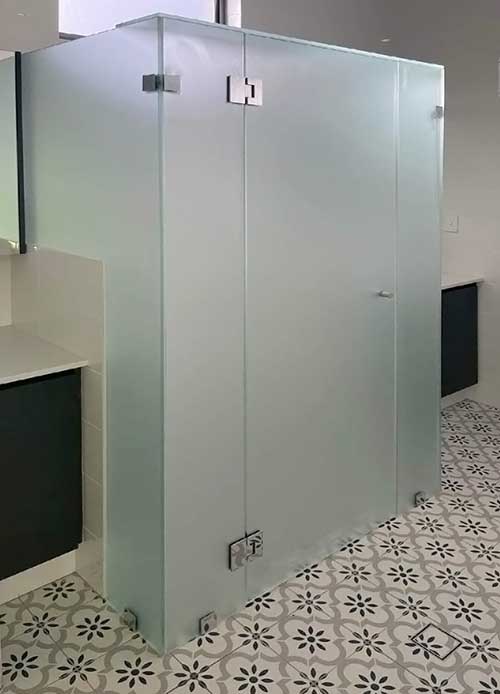
We use Satin Etch glass as our obscure/frosted glass and despite its opacity offers many of the same benefits as traditional transparent glass, including light transmission, noise reduction, and protection from harmful UV rays.
We use satin etch glass to create our glass shower screens with privacy.
Double Glazed Glass
Double glazing is a type of glass that consists of two panes of glass with a space in between them. The space between the panes is typically filled with argon gas, which acts as an insulator.
One of the primary benefits of double glazing is that it helps to reduce heat loss. This is due to the fact that the argon gas within the space between the panes acts as a barrier, preventing heat from escaping.
As a result, double glazed windows can help to keep a home warm in the winter and cool in the summer.
In addition to reducing heat loss, double glazed windows also provide noise reduction and improved security.
Wrap up
There are many different types of glass that can be used in the home for both functional and aesthetic purposes. In this article, we have looked at some of the most common types of glass and their uses.
If you’re unsure about what type of glass you require for your specific needs, give us a call at Dial A Glass, we’d be happy to help.

